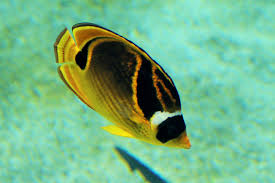
Blue Willow China, the iconic blue-and-white porcelain design, is more than just a beautiful piece of dinnerware. It is also deeply tied to a captivating and sometimes tragic story, a story which has sparked the imagination of artists, collectors, and enthusiasts for centuries. The intricate patterns of Blue Willow porcelain depict not only tranquil landscapes but also a legend of forbidden love, loss, and hope for eternal reunion. While the pieces themselves are undeniably charming, it is the fictional characters associated with Blue Willow that give the design its emotional depth and narrative complexity.
These characters, woven into the design’s traditional interpretation, have become the focal point of a legend that has transcended time and culture. In this article, we will delve into the fictional characters featured in the Blue Willow legend and explore their roles within the larger narrative. Through understanding these characters, we can better appreciate the rich cultural context of Blue Willow China and the emotional resonance that the design continues to evoke.
The Blue Willow Story: A Brief Overview
Before exploring the individual characters in detail, it’s essential to understand the basic framework of the Blue Willow legend, as these characters are deeply intertwined with its narrative. The story depicted on Blue Willow china is one of forbidden love between two main protagonists: a princess named Koong-se and a young scholar named Chang. Their love is thwarted by societal pressures, especially the princess’s father’s strict wishes for her to marry a wealthy man instead of a commoner. As a result, Koong-se and Chang are forced to part, but their love endures despite the separation.
The story culminates in tragedy when the lovers, after being pursued by the princess’s father, leap to their deaths. However, in a poetic twist, the spirits of the two lovers are transformed into birds, symbolizing their eternal love and unity in the afterlife. The legend captures themes of love, loss, and the desire for reunification, with each element of the Blue Willow design serving as a visual representation of the narrative.
Now, let’s explore the fictional characters that play crucial roles in this moving story and their symbolic significance within the larger context of Blue Willow.
1. Koong-se: The Princess of Forbidden Love
Koong-se is the female protagonist at the heart of the Blue Willow legend. She is depicted as a beautiful, noble, and compassionate princess, whose love for Chang, a scholar of humble origins, is at odds with her father’s wishes. Koong-se represents the purity and strength of love, as well as the tragic consequences that can arise when love is thwarted by societal expectations.
Her role in the story highlights themes of social class disparity and the struggles that love often faces in the face of tradition and family loyalty. Koong-se’s father arranges her marriage to a wealthy suitor, a union that she does not desire. Her love for Chang, however, is pure and unwavering, a love that defies the boundaries of class and authority. Her character reflects the tension between individual desires and the expectations imposed by family and society.
Koong-se’s emotional journey throughout the story—from her initial joy in being with Chang to the heartache of separation and the eventual tragedy—resonates with universal themes of love and sacrifice. The Blue Willow design features her image as part of a narrative scene that captures her profound longing and despair. Her enduring love, even in the face of overwhelming obstacles, makes her a relatable and symbolic figure for those who have experienced love’s complexities.
2. Chang: The Scholar and Unrequited Lover
Chang is the male protagonist in the Blue Willow story and the object of Koong-se’s affections. A young scholar of humble means, Chang is depicted as a figure of intelligence, virtue, and sincerity. He represents the idea that love transcends social status, with his character embodying the notion that true love is not confined to wealth or class.
Chang’s love for Koong-se is genuine and deep, yet his social position makes their union impossible. His character highlights the theme of the powerless lover, who is unable to change the circumstances that separate him from the woman he loves. Chang’s character is also a symbol of sacrifice. He is willing to endure hardship and separation in the name of love, which ultimately leads to his tragic death.
As the story progresses, Chang becomes a symbol of both hope and despair. His steadfast devotion to Koong-se makes him a tragic hero—one who is driven by love even to the point of self-destruction. His spirit, like that of Koong-se, is transformed into a bird after their death, symbolizing the eternal nature of their love. Chang’s character speaks to the ideal of pure, undying love that surpasses the boundaries of life and death.
3. Koong-se’s Father: The Barrier to True Love
Koong-se’s father is an important, albeit antagonistic, figure in the Blue Willow legend. His role as the one who forbids the union between Koong-se and Chang is central to the tragedy that unfolds. As a father and ruler, he represents authority, tradition, and the power of familial duty. His insistence that Koong-se marry a wealthy suitor reflects the rigid social structures and class hierarchies that existed in ancient societies.
Although his intentions may stem from a desire to ensure his daughter’s future security, his character serves as a reminder of the oppressive forces that can stand in the way of love. The father’s role in the narrative is a catalyst for the lovers’ separation, which ultimately leads to their death. His actions—though motivated by traditional values—lead to the story’s tragic conclusion. The presence of Koong-se’s father within the Blue Willow design is a visual reminder of the cultural forces that hinder the fulfillment of love, adding complexity and depth to the overall narrative.
4. The Birds: A Symbol of Eternal Love
While not human characters, the birds in the Blue Willow pattern are some of the most significant figures within the narrative. After the tragic death of Koong-se and Chang, their spirits are said to be transformed into birds, which represent their eternal love and unity in the afterlife. The birds symbolize the idea that true love cannot be confined to the physical realm; it transcends death and lives on in the form of spiritual connection.
The transformation of the lovers into birds is a poetic and poignant aspect of the Blue Willow story. It suggests that love is not bound by time or space but endures eternally, even after the physical bodies of the lovers are gone. The birds, often depicted in flight within the Blue Willow design, are a visual representation of this everlasting bond.
For those who view Blue Willow china, the sight of the birds serves as a reminder that love, like the flight of these birds, is unbounded and free. The birds are symbols of liberation and reunion, as they allow Koong-se and Chang to be together forever, unrestrained by earthly limitations.
5. The Bridge: The Symbolic Pathway to Love
While the bridge is not a character in the traditional sense, it plays a pivotal role in the Blue Willow story as a symbol of the connection between the lovers. The bridge serves as a metaphor for the path that Koong-se and Chang must cross to unite, and it also represents the obstacles they must overcome to be together.
The bridge symbolizes transition and movement, both physically and emotionally. It is the point at which the lovers, separated by the forces of society and family, meet again in death. The bridge, like the willow tree, represents the fragility of life and the hope for reunion. Its presence in the Blue Willow design underscores the central theme of the story: love that endures beyond separation and death.
Conclusion: The Enduring Legacy of Blue Willow’s Fictional Characters
The fictional characters associated with Blue Willow China are integral to the story’s emotional depth and lasting cultural significance. Each character, from the lovesick princess Koong-se to the tragic scholar Chang, contributes to the poignant narrative of love, loss, and reunion. These characters are not only central to the story itself but also serve as symbols of timeless themes—love that transcends social barriers, the sacrifice inherent in deep emotional connections, and the hope for eternal unity.
The legacy of the Blue Willow characters endures through the generations, continuing to inspire and captivate people around the world. Through their story, Blue Willow China remains more than just a decorative porcelain pattern; it is a reminder of the enduring power of love and the enduring human spirit. Whether you are a collector of fine china, a lover of storytelling, or someone simply enchanted by the intricate design, the characters of Blue Willow serve as a testament to the lasting impact of narrative in art and culture.










